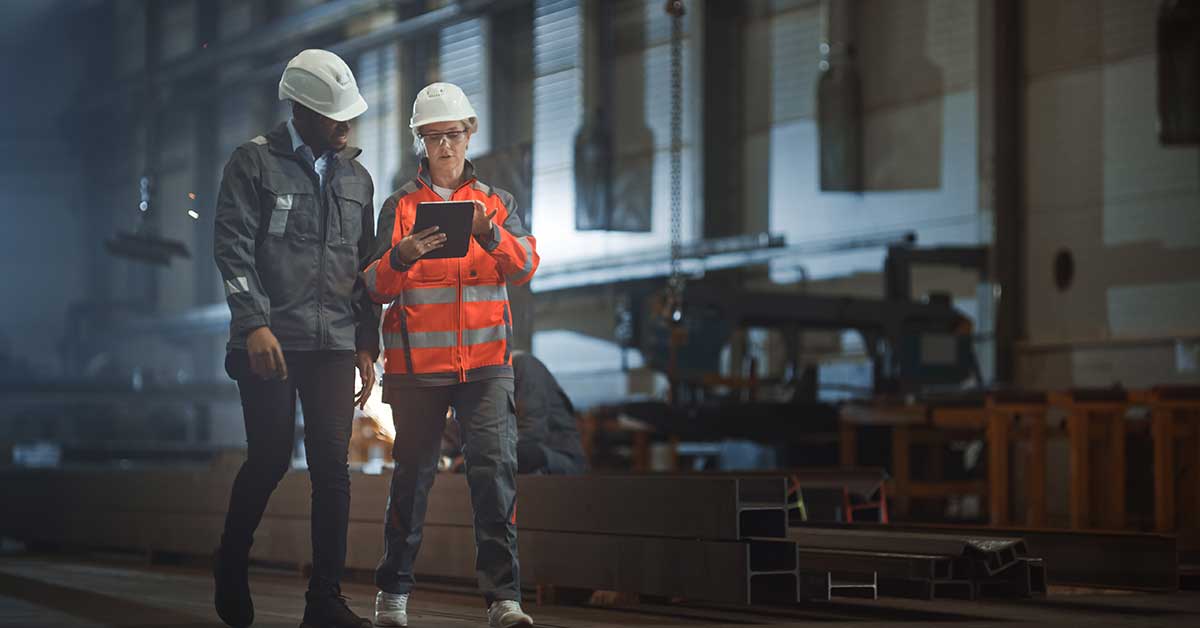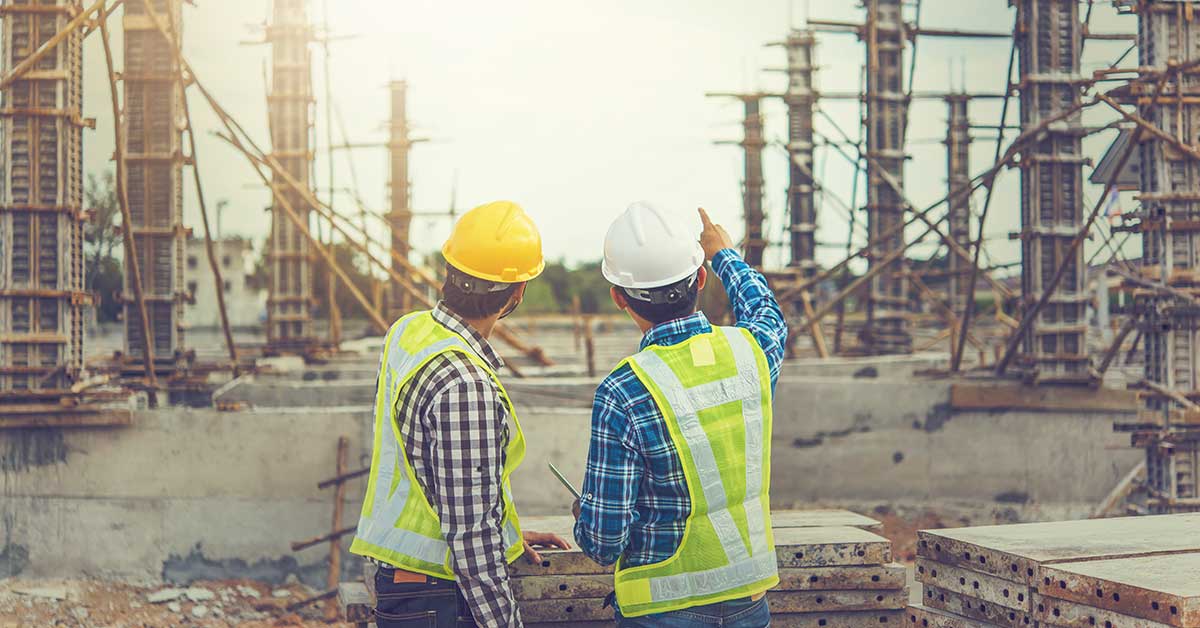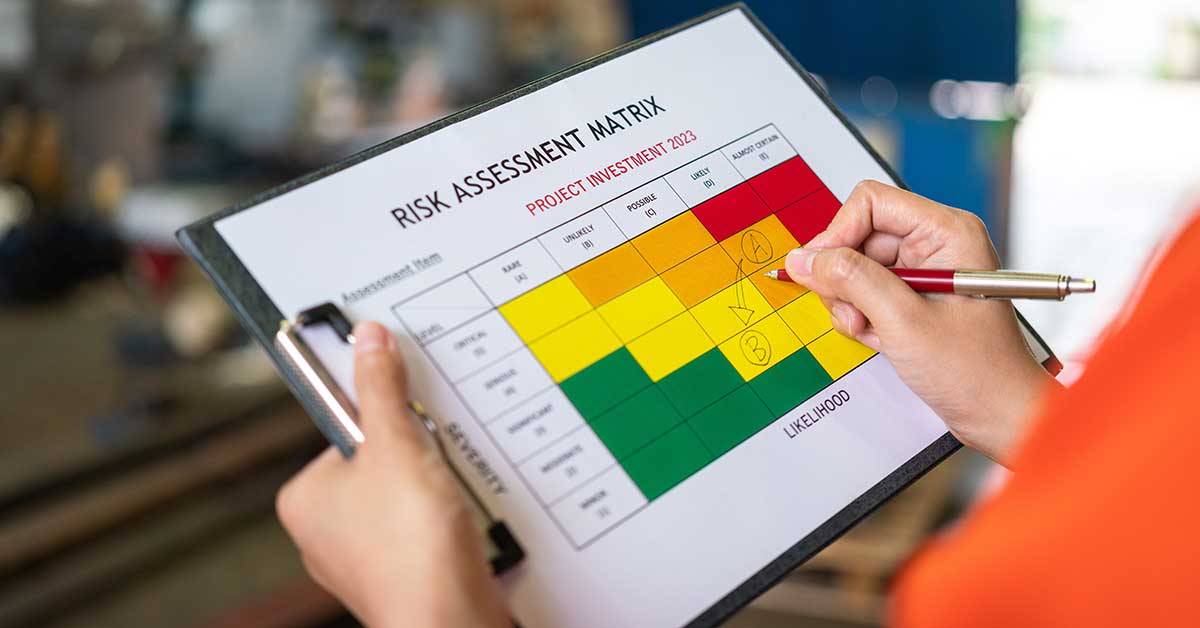Construction has always been a risky business. Accidents happen no matter how hard we try to prevent them. But accidents aren’t the only risk you must consider in a construction project.
Economic, environmental, and regulatory conditions are changing rapidly. As a result, construction projects face previously unfamiliar issues with supply chain stability and workforce availability alongside global inflation. In January 2023, roughly 7.9 million people were on construction payrolls in the US, approximately 400,000 fewer construction employees than there would have been pre-COVID pandemic. From some perspectives, construction has never been riskier.
With the absence of an all-knowing crystal ball to predict the progress of a construction project, you need a methodology and a set of tools to protect your business from the various risks it will face throughout its lifecycle. One way to achieve this is through a practice called ‘Construction Risk Management’ (CRC).
What is Construction Risk Management?
Construction risk management is the continuous process of identifying, analyzing, and mitigating various risks that can negatively impact your construction project’s cost-effective and timely completion. Construction risk management aims to address the uncertainties and potential impact of unforeseen events typically associated with construction endeavors.
The base for implementing construction risk management practices in most build organizations is through a construction risk management plan. Usually prepared long before a construction project starts, a construction risk management plan is considered a vital component of any construction project, especially from an insurer’s perspective.
Common Types of Construction Risk
- Financial risks include unforeseen conditions that increase the costs of a construction project. These include delays in payment or inadequate financial planning of the project, rapid changes in labor, materials, and equipment costs, as well as taxes, inflation, and currency rate fluctuations. To prevent financial risks, ensure you have the necessary construction insurance to cover your project, contractors, and subcontractors working with your company. This comes in various forms, with several insurance policies likely to be needed for a large project.
- Safety and personnel risks pertain to bodily harm caused to employees and third parties due to construction operations. Safety risks can include workplace accidents and injuries (usually resulting from inadequate safety measures), as well as potential health hazards to personnel and third parties (such as exposure to hazardous materials) or injury due to faulty construction practices.
- Legal and compliance risks are closely related to financial and safety risks, including risks associated with regulatory compliance, contractual obligations, and the potential costs of damage claims and non-compliance fines.
- Environmental risks such as storms, fires, or earthquakes should be considered according to local climate and global or local regulations concerning environmental risk management.

[ Industrial engineers walk in steel factory jobsite and use tablet to assess risks ]
How does a construction risk management plan benefit your project?
An effective construction risk management plan (CRMP) addresses all the risks relevant to your construction project and offers a wealth of benefits including, but not limited to:
- Enhanced safety and fewer on-site accidents through training and a positive safety culture that involves all stakeholders in identifying and mitigating risks related to their roles and responsibilities.
- Increased profitability and lower cost overruns can be achieved by reducing the likelihood of costly delays, and reworks and minimizing additional unforeseen expenses through proactively allocating resources for such events.
- Strengthened stakeholder trust and confidence means that your construction teams feel more confident in your ability to safeguard their health and well-being and contribute to the reputation of your brand and business. In addition, a CRMP is often required by insurers and industry regulators.
- Optimized allocation of resources through careful risk management can help minimize waste and shortages, leading to cost savings.
- Systematic mitigation of common risks enhances your operational agility by enabling you to detect issues early, follow pre-defined contingency plans, and gain valuable insights throughout the project. Although not as known as more overt disasters, water wastage is a devastating risk that can see over 25% of the water entering a construction site going to waste. This leads to expensive bills and a high carbon footprint. To cover this crucial issue, consider implementing a solution like WINT’s advanced AI and machine learning technology, which monitors water flows and alerts your staff as soon as anomalies are detected, enabling you to take action in real-time.
- Project resilience results from the above-mentioned operational agility that enables you to approach risks in an organized and timely manner.

[ Architect on a building construction site ]
7 Essential steps toward an effective construction risk management plan (CRMP)
1. Information Gathering
Before creating a construction risk management plan, you need to have all the relevant information regarding the project. There are multiple factors that may raise the overall risk of your project, so you must pinpoint them at the very beginning and make informed decisions going forward.
For example, in your information-gathering process, you may discover that the worksite is located in an area rich in archeological findings, and you will need to collaborate with local archaeological authorities during your work. Archeological findings at your worksite can also cause delays, or even cancellation of the entire project altogether.
This step entails:
- Discovering the relevant stakeholders in your project.
- Reviewing the construction risk reports of similar projects completed in the same region.
- Researching economic, legal, environmental, and other aspects of the project.
2. Risk Identification
To identify the risks to your project at the pre-building stage, you will need to engage the stakeholders and hold brainstorming sessions with the project teams. This enables them to contribute from their experience and expertise and to come up with all the potential scenarios that may impact the project to form a risk register.
For example, your risk register may include weather events that are typical to the region and may impact your project like heavy rains or frost, as well as issues of theft or vandalism in areas with high crime rates.
3. Risk Assessment & Prioritization
Not all construction risks are born equal. Having identified the risks to your project and the people involved, the next step is an in-depth analysis of each potential risk, a systematic assessment of its potential impacts, and an estimated statistical likelihood of occurrence.
Traditionally, risk assessments are performed using tools and techniques like assessment checklists, probability and impact matrices, cause and effect diagrams, or other qualitative and quantitative methods. This step aims to analyze risks in a way that enables prioritization of mitigation efforts and helps teams focus on the most critical risks.
For example, water intrusion damage is a common risk that requires project-specific assessment and prioritization of each potential risk scenario. From weather events to leaky HVAC pipes, it’s vital that you consider the likelihood of occurrence as well as the potential impact a water intrusion damage event will have on your project.

[ Action of business manager rating project plan risk assessment matrix ]
4. Standardized Documentation
This step and the next are not necessarily ones that need to be done in any particular order. Rather, components like document standards, reporting schedules and parameters, various forms, and process and equipment safety documentation should be produced and communicated to relevant stakeholders throughout the project.
With more than a few completed projects under your toolbelt, you probably have some standards for documentation and knowledge sharing in your company. However, it’s important to customize those standards for each specific project and keep them up-to-date with the latest best practices.
For example, when employing a new vehicle or technology in a project, it’s important to ensure that the documentation and safety instructions are available to all relevant parties in the form of a language or format that is accessible to them
5. Stakeholder Engagement & Involvement
Creating, maintaining, and successfully executing a construction risk management plan requires the engagement and involvement of all relevant stakeholders throughout the project lifecycle. This may mean engaging different teams and contractors formally and informally to leverage their hands-on experience in identifying the risks common in their fields.
This phase also entails planning the types of safety training and documentation necessary to minimize risks and maintain compliance with regulatory requirements.
For example, you can create a framework that allows contractors and workers on the site to contribute their ideas and suggestions on how to make the site a safer place of work with collaborative mobile applications for workforce engagement.
6. Risk Response Strategy Planning
With a construction risk register and the relevant stakeholders involved, it’s time to decide how to respond to each type of potential threat or hazard. Typically, companies address the risks identified, assessed, and prioritized in one of four ways:
- Risk reduction is the most common tactic companies use to mitigate risk, and it entails doing everything possible (within reason) to prevent them from actualizing. For example, safety training is the most basic approach to reducing on-site injuries, while implementing an AI-powered leak detection system is a technological solution that significantly reduces water risks and mitigates water incidents in construction.
- Risk avoidance entails changing the project’s scope, design, or location to address certain risks. For example, you may want to avoid starting a new project in an area with an active volcano or civil unrest.
- Risk transfer can be an expensive risk response strategy, but it can help project managers sleep better at night. By transferring certain risks to subcontractors or insurers, you essentially pay to make a 3rd party accountable for mitigating the risk. In other words, now it’s someone else’s problem, and you trust them to address it if and when it occurs.
- Accepting risk is part of doing business, and it’s important to understand that no matter how extensive your CRMP is, some risks are out of your control and must be accepted. This means you will need to have contingency plans in place to ensure the timely completion of the project without cost overruns in the event a risk out of scope is realized.
7. Risk Monitoring & Review
Construction risk management is an ongoing process that doesn’t start and end at the pre-building phase. Even after brainstorming for every possible disaster and creating a response strategy for it, residual risk will always remain because life will always find a way to surprise you.
Continuous monitoring for newly identified risks and regular updates to your CRMPs ensures operational agility and lets you quickly implement the controls necessary to avoid emerging risks and ongoing potential issues.
For example, in regions of conflict, it is important to stay informed on geopolitical events that may impact your project. You may find yourself with a worksite located around a crime zone, or lose access to your workforce due to an emergency situation.
Don’t hesitate to revise and update your plan frequently. The more evolved and detailed it is, the more likely it is to protect you from risk and increase your business resilience beyond the specific project.
WINT – The next generation of water risk management
Water intrusion risk is one of the most common ones in construction. In fact, nearly one-third of general contractors’ risk losses are a result of water damage and account for 70% of construction litigation. In drafting your construction risk management plan, it’s important to pay attention to your water risk strategy and focus on reducing risks by employing cost-effective and scalable solutions built for builders.
WINT Water Intelligence offers a unique AI-powered leak detection and mitigation solution that analyzes water consumption in your site and finds abnormal water use patterns before the damage has a chance to spread, identifies the source of the leak, automatically stops the water flow, and alerts the relevant personnel.
Build professionals employing WINT’s technology found that they can reduce the occurrence of water intrusion damage on work sites and lower the number of resulting insurance claims as well as insurance payouts by as much as 90 percent, significantly reducing one of the most critical risks in construction projects.

